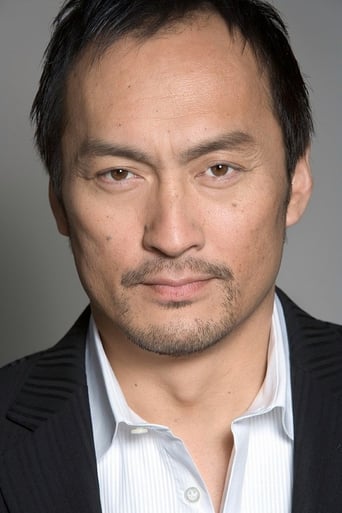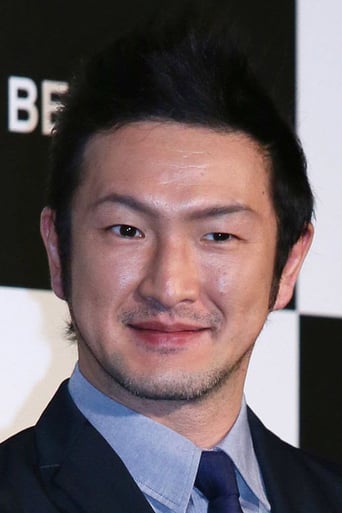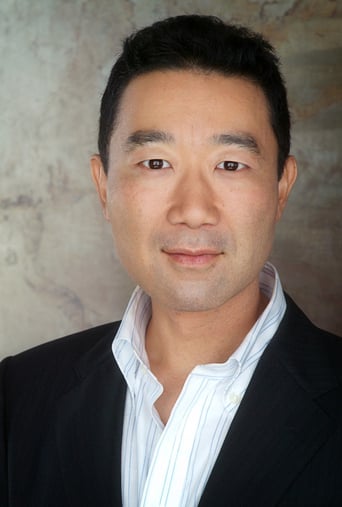NekoHomey
Purely Joyful Movie!
Contentar
Best movie of this year hands down!
Chirphymium
It's entirely possible that sending the audience out feeling lousy was intentional
Kimball
Exactly the movie you think it is, but not the movie you want it to be.
Wuchak
RELEASED IN 2006 and directed by Clint Eastwood, "Letters from Iwo Jima" chronicles The Battle of Iwo Jima, which took place February 19–March 26, 1945. Of the approximately 21,000 Japanese entrenched on the island about 18,000 died either from fighting or by ritual suicide. Only 216 were captured during the battle, but close to 3,000 were later found hiding in the caves & tunnels.While this is an American-Japanese co-production, it was written by Japanese and the main cast is entirely Japanese (e.g. Ken Watanabe, Kazunari Ninomiya, Tsuyoshi Ihara, Ryo Kase, etc.). Bitter critics complained that the movie is sympathetic toward the Japanese and their stubborn emperor worship. While it's true that the movie does humanize them despite their renowned brutality during the war, it potently shows the folly of worshipping the martial state and the inevitable ramifications (doom).In theory, Japan's government was a constitutional monarchy during WWII but, in fact, it was a military junta (dictatorship) and therefore totalitarian in nature. The movie effectively shows the harebrained ideology of government-worship and the corresponding misguided "honor" of sacrificing oneself for the malevolent goals of said government. What a waste! "Letters from Iwo Jima" also powerfully details the American threat to the remote isle and its militants. Put simply, these boys came to kick total axx. Their aim was to bomb/shoot/whatever first and ask questions later. If I were there I would've done the same because the Japanese made it clear that this was a fight to the death. I'm actually surprised at how many Japanese POWs were taken (216 but, like I said, almost 3000 were eventually found in the caves & tunnels). By contrast, only 2 Marines were captured by the Japanese, but they died of their wounds while captive.The first 44 minutes are a set-up wherein the characters and their desperate situation on the isle are established before the action starts. From there it gets seriously brutal and increasingly dismal till the climax. For balance, be sure to see Eastwood's companion piece "Flags of Our Fathers," which debuted two months prior.THE MOVIE RUNS 141 minutes and was shot in Barstow & Bakersfield, California, with establishing shots of Iwo Jima. WRITERS: Iris Yamashita (and Paul Haggis) from the books by Tadamichi Kuribayashi & Tsuyoko Yoshido.GRADE: B+/A-
gian_99
I have watched this movie on Netflix before it was removed. I have not watched "Flags of our fathers" so I can't compare this movie with its other half, but I found it a good representation of the Japanese, even if maybe the feelings represented are influenced by an American writing of the story.For example the Japanese military police is represented in a harsh way that I have not seen in Japanese movies. The necessity and responsibility the Japanese soldiers felt to defend their country is quite well, maybe not to its full extent, represented, which I imagine could have been difficult to write and watch for Americans. I feel the true Japanese side, ad was felt now, of the events is kind of Americanized or maybe softened in this movie (compare for example with The Emperor in August). On the other hand maybe this movie tells one Japanese side of the history of the war which wouldn't be completely easy to tell by the Japanese without some outside influence.Watanabe is great as usual and the movie is visually good. It lacks"greatness" but it's a nice watch.
peefyn
I have yet to see Flags of our fathers, but I love the idea behind looking at a conflict from two different sides. I really appreciate what Clint Eastwood has done here, and I hope he and others will continue to explore the "less seen" perspectives of conflicts like this.But it still feels very much like a Western take of the Japanese perspective. The ideal Japanese characters in here has a lot of American influence (having lived there), and while I'm sure the movie is trying to be realistic when it comes to the Japanese mentality, it's still shown as something foreign. There are some good attempts at making their (more extreme) behavior understandable, but I think the movie can only do it's mission justice by going all the way.But when it does succeed, it's a very good movie, with several memorable moments.
Leofwine_draca
Now this is more like it! The second of the two Clint Eastwood-directed films focusing on the battle for Iwo Jima, this is the one from the Japanese viewpoint and it's a bloody good bit of film-making. It also happens to be the darkest film I've ever watched, and that's a list that includes plenty of horror and serial killer movies. Set entirely on the island of Iwo Jima and focusing on the Japanese forces as they prepare for and then eventually fight the Americans, this is a lengthy bit of film-making that's simply spellbinding for every second it plays out. Eastwood strives for realism and achieves it; there are no gung-ho heroics on offer here, no flights of fancy or exciting battles for survival. Instead, the world of LETTERS FROM IWO JIMA is dark, depressing and brutal, where friends die on a routine basis and hope gradually fades as time goes on.The cast is what really makes this film work. In a film focusing so much on characterisation, going so far as to give back stories in flashback to the principle folk involved, the quality of the acting is key and the actors don't disappoint. Ken Watanabe, recalling us of his former glory in THE LAST SAMURAI, presides over things with a subtle and nuanced turn as the unorthodox general; he's fantastic, as are all the rest. I especially loved the young men who prepare for war; we learn that these men are as brave and naïve as the Americans fighting on the other side in FLAGS OF OUR FATHERS. Real emoting is involved and in the end you root for all these characters, which makes what happens so much more powerful.The cinematography is frequently breathtaking and the washed-out look of the film fits the action perfectly. This is an epic in which the quite, intimate moments of dialogue are just as strong as the effects-heavy battle scenes, and everything feels fresh and so alive. There are many moments of brilliance here, including the notorious grenade suicide scene (one of the most disturbing ever put on film), the final, hopeless charge, the fate of the deserter, and the gradual breakdown of communication and leadership within the labyrinthine tunnels of the island. Film-making at its best, and a movie that easily beats SAVING PRIVATE RYAN as one of the great WWII films of all time.







